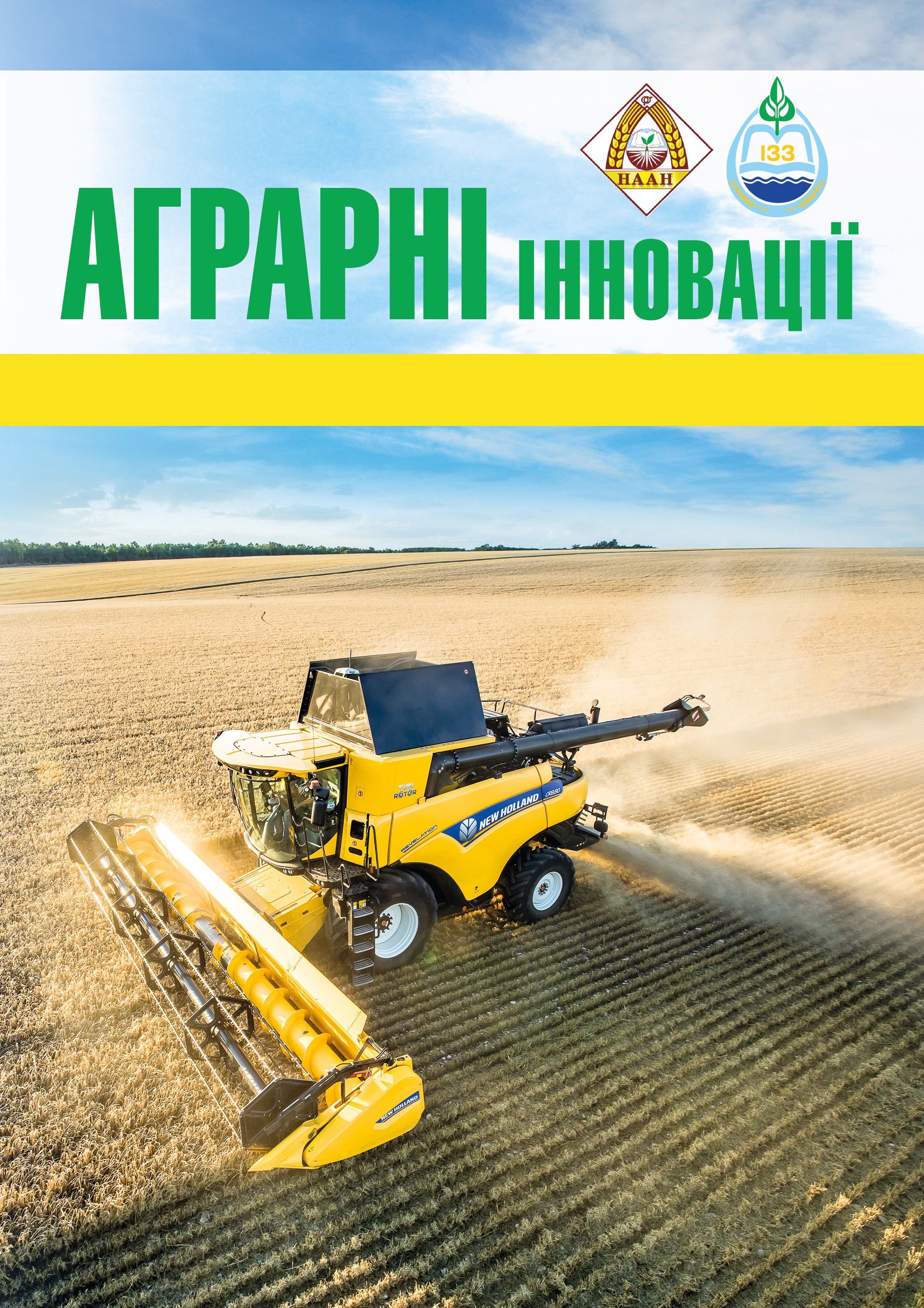Total water consumption and evaporation of alfalfa seed crops and year of life
Abstract
Purpose: to determine the indicators of total water consumption taking into account the natural moisture content of years of research in the cultivation of crops by different methods of irrigation. Methods: field, laboratory, statistical. Results. When applying drip irrigation in all phases of alfalfa growth in the 1st year of life, the total moisture reserves in the 0-100 cm layer of soil were 1974-2256 m3 / ha (66-75% lowest moisture content). Despite the fact that only 0-50 cm layer of soil is moistened by drip irrigation, its humidity in% of the lowest moisture content in all soil layers up to 0-100 cm was almost the same. When studying the total water consumption, it was found that this indicator in the variant with the use of irrigation in furrows exceeded: control by 147.9% in the soil layer 0-100 cm, 141.5% in the soil layer 0-150 cm and 140.5% in the soil layer 0-200 cm; option with the use of drip irrigation by 35.3, 29.5 and 26.5%; micro-sprinkling by 8.3, 4.4 and 4.0%, respectively. As a result, the total water consumption is increasing, it was found that in all interphase periods of alfalfa development (except for the period of germination), it was the highest in the experiment using furrow irrigation, and the lowest when using drip irrigation, which confirms the average daily data. evaporation. Conclusion. The application of drip irrigation on alfalfa crops in the first year of use reduces the irrigation rate by 56.4-73.1%, and in previous years – by 53.7-54.7%, compared with micro-sprinkling and furrow irrigation. It was found that when growing alfalfa in the first year of use, regardless of the method of irrigation, the highest rate of average daily evaporation was when using furrow irrigation, and the lowest with drip irrigation. In all variants of the experiment from the beginning of seedlings, the average daily evaporation increased, reaching a maximum during the flowering period – the beginning of the filling of beans, and then gradually decreased, reaching a minimum at the end of the growing season.
References
Голобородько С. П., Снеговой В. С., Сахно Г. В. Люцерна : Научно-методическое издание. Херсон : Айлант, 2007. 328 с.
Писаренко В. А., Мішукова Л. С. Новий метод визначення випаровування і управління режимом зрошення сільськогосподарських культур. Экологические основы онтогенеза природных и культурных сообществ Евразии : матер. Х1V межд. науч. конф. Херсон, 2002. С. 123-126.
Нікішенко В. Л., Гусєв М. Г., Малярчук М. П., Коковіхін С. В. та ін. Природні кормові угіддя Херсонської області та способи підвищення їх продуктивності : наук.-метод. реком. Херсон : ХМД, 2009. 20 с.
Olena Tyshchenko, Andrii Tyshchenko, Olena Piliarska, Iryna Biliaieva, Halyna Kuts, Pavlo Lykhovyd. Morphological Features of Roots and Their Variation in Alfalfa Genotypes. Technology Reports of Kansai University. Volume 62, Issue 06, July, 2020. Р. 2957-2964. https://www.kansaiuniversityreports. com/article/morphological-features-of-roots-and-theirvariation- in-alfalfa-genotypes
Писаренко П. В. Продуктивність зрошуваних земель. Зрошуване землеробство: збірник наукових праць. Херсон : Олді-плюс, 2010. Вип. 54. 396 с.
Vozhehova R., Tyshchenko A., Tyshchenko O., Dymov O., Piliarska O., Lykhovyd P. Evaluation of breeding indices for drought tolerance in alfalfa (Medicago) genotypes. Scientific Papers Series A. Agronomy. 2021. Vol. LXIV. No. 2. P. 435-444. http://agronomyjournal.usamv.ro/ index.php/scientific-papers/current
Доспехов Б.А. Методика полевого опыта (с основами статистической обработки результатов исследования). 5 изд., перераб. и доп. М.: Агропромиздат, 1985. 351 с.
Методика польових і лабораторних досліджень на зрошуваних землях. за ред. Р. А. Вожегової. Херсон : Грінь Д.С., 2014. 286 с.






